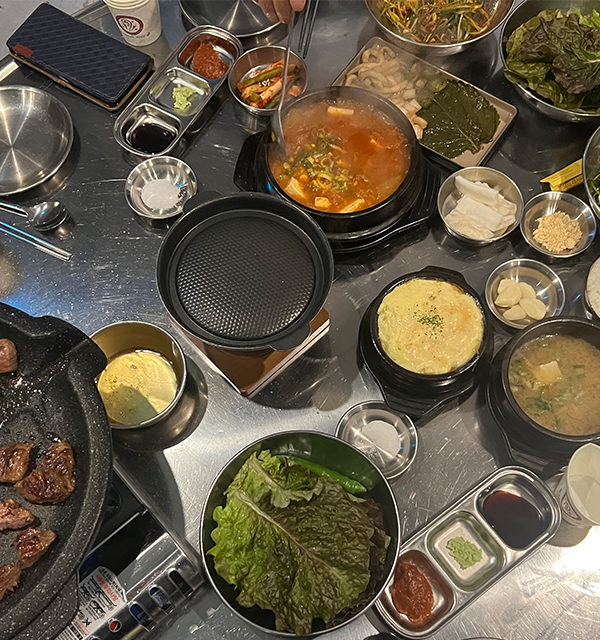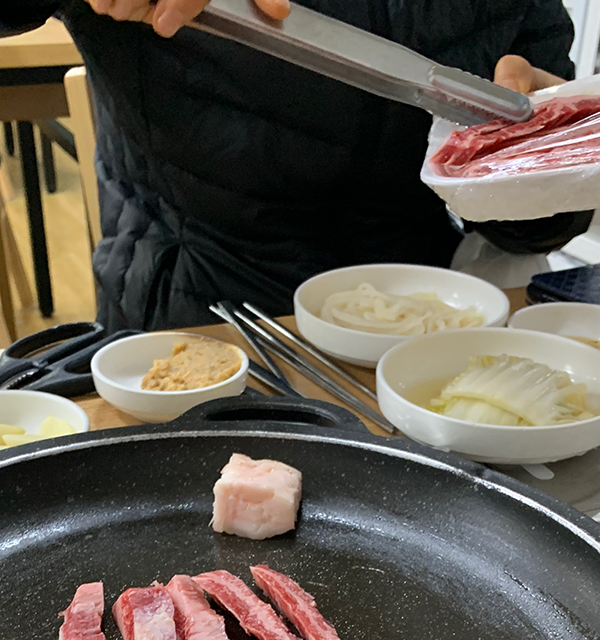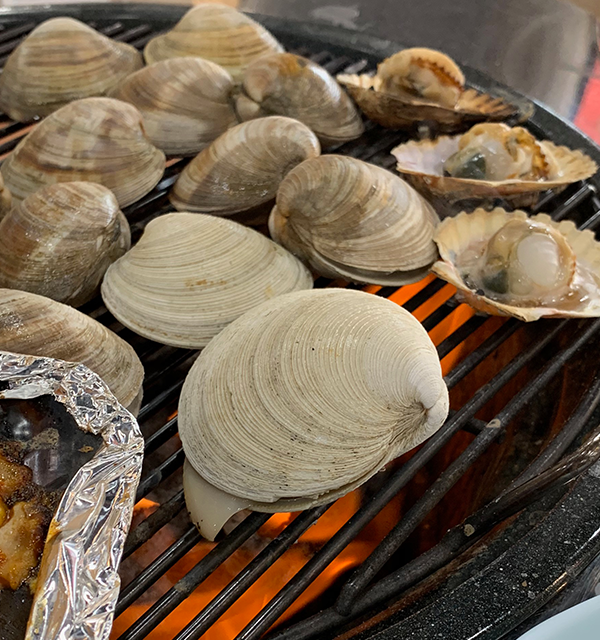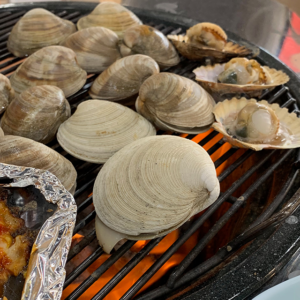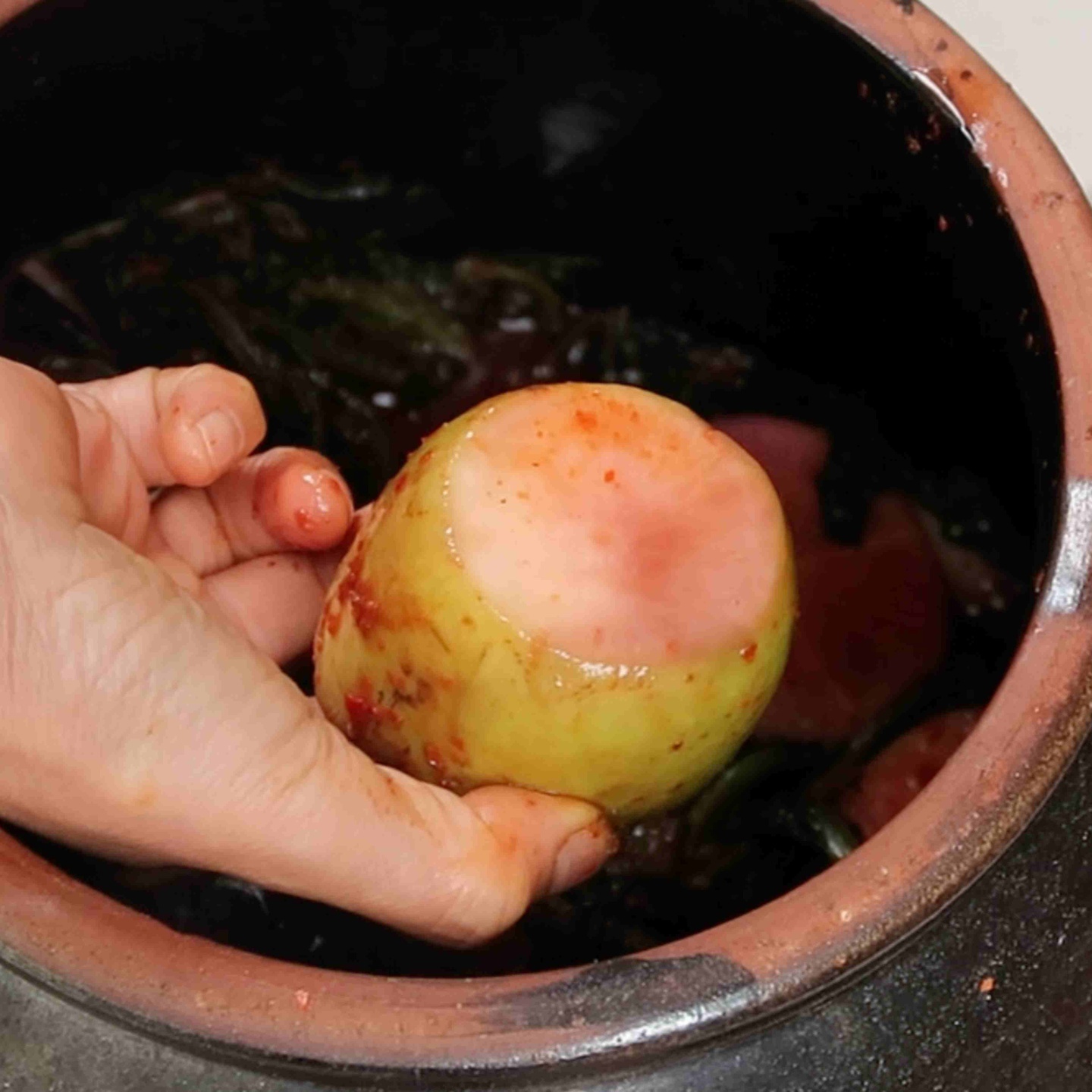Whole fish is one of the most common items to cooking using the 구이 cooking method.
Fatty or Lean Fish for Grilling
Different species of fish have different amounts of fat in their bodies; because of this, they are best used for different cooking methods.
Lean fish have a low-fat content and can easily become dry, particularly when overcooked. Lean fish may need moisture added to them, like a broth or sauce, to add richness and moisture. Braising, frying, poaching, sauteing, and seaming is examples of cooking methods that are preferable for lean fish.
Fat fish contain enough fat to enable them to tolerate more heat without becoming dry. Sautéing, grilling, broiling, roasting, and baking is preferable for fatty fish.
Some examples of fatty fish are Salmon (연어), Sardines (정어리), Herring (청어), Mackerel (고등어), Butterfish (병어), Anchovy (멸치), Japanese horse mackerel (전갱이), Saury (꽁치), Eel (장어), Yellow croaker (참조기), Hairtail (갈치), Sea bass (농어), Patagonian Toothfish (메로).
Cooking your fish based on their fat content is not a law. Just like everything, you will decide what works for your diet and needs. This guideline is just a reference so you can create the best dish by knowing your ingredients.
Popular Species of Fish used for Grilling
Yellow Croaker 조기 (jo-gi)
- This fish is golden yellow in color.
- It is tender, savory, and subtly sweet.
- It is one of the most popular fish to grill.
- It is in season from spring to fall.
- “굴비” is another term for this fish that is salted and dried. Check the package before you purchase it.
Hairtail 갈치 (gal-chi)
- This fish is also known as Belt fish
- It is a long thin fish with flaky white meat and a mild flavor
- This fish is in season in the winter months and available year-round.
Sea Bream 돔 (dom)
- This fish has a clean taste with a slight sweetness.
- This fish is in season from spring-summer.
Mackerel 고등어 (go-deung-o)
- This fish has a unique pattern on its skin and a rich flavor.
- This fish is another super popular fish to grill.
- It is in season from spring-fall.
Mackerel Pike 꽁치 (kkong-chi)
- This fish is also known as “Pacific saury.”
- It has a milder and lighter flavor than mackerel.
- It is in season in the fall.
Silver Pomfret 병어 (byong-o)
- This fish is also known as Butterfish, Pomfret, or Pompano.
- This fish has unique tasting white meat that is tender and filling.
- It is in season from summer to winter.
Dotted Gizzard Shad 전어 (jon-o)
- This fish has tender and aromatic meat.
- It is in season in the fall.
Market Forms of Fish used for Grilling
You can purchase fish in different market forms based on what works for you. Buying pre-prepared fish can save on prep time. No matter what prepared fish you purchase, you need to remove the scales, trim the fins, and optionally remove the gills and guts before grilling them.
- Whole Fish: Whole fish are sold intact with the head, gills, and guts still attached. Fish meat near the intestines and gills can be bitter if they are not removed. It is, however, optional to remove them before grilling.
- Drawn Fish: Do you want to grill the whole fish but are not comfortable breaking it down and removing the guts? The answer is to buy your fish “drawn.” Drawn means the fish is sold whole with the intestines removed. Another benefit of removing the fish intestines is that there would be a less fishy aroma.
- Butterflied: Butterflied fish are fish that are cut in half, usually without the spine. It sometimes has the head on or off. Butterflying your fish will make it cook quicker. It also looks really beautiful on the plate.
The “Whys” of Grilling Fish
There are some general methods that can improve your grilled fish dish.
Why Cure?
Curing is spreading a layer of coarse salt onto a protein like whole fish and letting it sit for 30 min – overnight before patting off the salt and moisture and then grilling. Curing makes the texture of the protein firmer, helps the protein retain moisture, enhances the natural flavor, and makes the color of fish more vibrant.
Why Dredge?
Dredging is placing your fish into flour or powder and shaking off the excess. You want to dredge your fish in flour to prevent it from drying out as you grill it, to reduce oil popping in your pan, and to make a golden color on the surface of the fish. Dredging also absorbs excess liquid, which, if kept on the surface of the fish, can prevent the skin of the fish from achieving that golden color we want.
You can dredge your fish in flour or frying mix (튀김가루) before grilling. If you want to reduce the natural smell of your fish, then you can mix in ingredients with the flour, like curry powder or soybean powder. The basic ratio would be 2:1 curry powder or soybean powder to flour. You can mess around with the ratio and create your own dredge.
Why Cut/Score the Fish?
Cutting or scoring the fish is when you run with a knife along the skin of the fish to make a shallow slice, not fully cutting through the fish. Making incisions helps the fish to cook faster and helps to prevent breakage/splitting. It also allows for oil and liquid to come out of the fish, which can make the skin of the fish even more crispy. You can play around with different patterns on the skin of the fish, like a “v” shaped pattern, diagonal cut, or crisscross cut.
Steps to Grilling Whole Fish
In this section, we will cover the basic steps to grilling whole fish.
#1 Add Oil
Step one is to get your heat source ready. Get it ready by adding a neutral flavored high smoke point oil to your pan. Use a neutral flavored oil so that you do not overwhelm the natural taste of the fish. If using a fish rack (good for delicate fish), then oil the fish rack. When using a grill, brush oil onto the grate of the grill.
#2 Heat Grilling Vessel
Step two is to ensure that your heat source and the oil on it are completely heated. Grill on medium heat. Too high, and the fish will burn before it is fully cooked. Too low, and it will not brown. Once the oil is completely heated, then add the fish.
#3 Place this Side Down
Step three is to place the correct side of the fish down on the hot pan first. If you are using butterflied fish, then place the flesh side down onto the pan first this prevents shrinkage and shriveling. If you are using a filet with skin on one side, then place the flesh side down for the same reason. When using whole fish, you can place any skin side down since the whole thing still has skin all over.
#4 Is My Fish Done Cooking?
It is better not to flip your fish too often as it grills because this can lead to breakage. Flip your fish to the other side once it’s about ½ way done on one side. You can usually tell it is time to flip the fish because some moisture drops will start appearing on the fish. After flipping, you will grill the other side until the fish is fully cooked.
If you are new to grilling fish, then here are some ways to tell if your fish is completely cooked.
- You can take the temperature of the fish by using a thermometer which should read 145F/63C once the fish is completely cooked. Place the thermometer near the bone or in the thickest section for 15 seconds until it reads 145F.
- Another indicator that the fish is completely cooked is that the meat will start to separate into flakes. You can see this easier if you are cooking a filet.
- If the fish is whole and contains bones, then you can tell that it is done cooking when the fish starts to separate from the bone.
- Finally, if the flesh has turned from transparent to opaque, it is done cooking.
